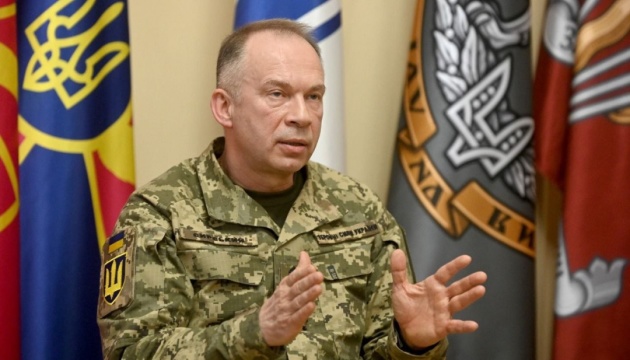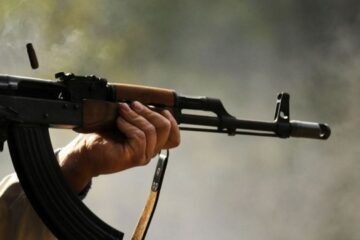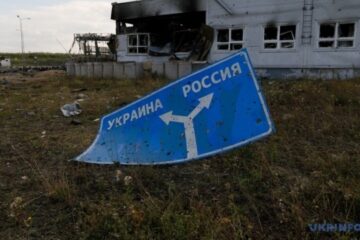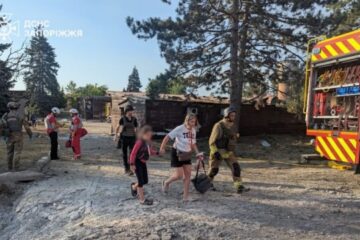
As of today, Ukrainian forces continue to maintain a presence in the Glushkovo district of Russia’s Kursk region.
According to Ukrinform, Commander-in-Chief of the Ukrainian Armed Forces Oleksandr Syrskyi said this in a Facebook post on the anniversary of Ukraine’s Kursk offensive operation.
“As of today, Ukrainian forces maintain a presence in the Glushkovo district of the Kursk region, tying down part of Russia’s offensive grouping,” he said.
[embedded content]
Syrskyi recalled that on August 6, 2024, the Ukrainian Defense Forces launched the Kursk offensive operation — the first to bring full-scale war onto the territory of the aggressor state.
“This was a bold and decisive move in response to the enemy’s preparations for a new offensive campaign in northern Slobozhanshchyna. We didn’t wait for a strike — we delivered one ourselves. Through action, we proved that Ukraine is capable not only of defending itself but also of preemptive and effective attacks,” he said.
Video: Ukrainian Special Operations Forces
Syrskyi added that following careful planning, Ukrainian units broke through enemy defenses, advanced deep into Russian rear areas, and disrupted their logistics. At the peak of the operation, the Ukrainian Armed Forces controlled up to 1,300 square kilometers of the Kursk region.
“We demoralized Russian personnel and forced them to redeploy significant reserves to the Kursk region, thereby easing pressure on other parts of the front,” he said.
Syrskyi noted that at the time, Ukraine’s Armed Forces thwarted enemy plans for an offensive and established a buffer zone, thanks to which the cities of Sumy and Kharkiv remain on free Ukrainian soil.
“Within one year, in the area of responsibility of the Kursk Group of Forces, the Defense Forces inflicted heavy losses on the enemy. The Russian army lost more than 77,000 troops killed and wounded (about 4,000 of them North Korean citizens). In total, 7,236 units of Russian weaponry and military equipment were destroyed or damaged, including 211 tanks, 1,083 armored vehicles, 907 artillery systems, one aircraft, three helicopters, 15 air defense systems, and 2,795 vehicles,” Syrskyi said.
He also stated that the Kursk operation yielded invaluable humanitarian results: 1,018 captured Russian servicemen were added to the prisoner exchange pool, which has already enabled the return of hundreds of Ukrainian soldiers, including some held captive since 2022.
“In fact, the enemy was only able to begin reclaiming lost positions and areas after deploying North Korean troops, significantly reinforcing its forces, and concentrating its use of guided aerial bombs in the Kursk region,” he said.
Syrskyi stressed that the offensive operation in the Kursk region achieved most of the strategic objectives set by Ukraine’s top leadership.
“The scale of the enemy’s losses, the effectiveness of our asymmetric offensive actions, and our unwavering adherence to international humanitarian law on Russian territory were recognized globally and became a valuable source of experience for both Ukrainian troops and foreign allies,” he said.
“This operation is yet another confirmation that the Ukrainian military possesses strategic thinking, strength, and will,” Syrskyi said.
He also thanked all the soldiers who participated and continue to participate in the campaign in the Kursk region for their professionalism, courage, resilience, and dedication.
“I bow my head in remembrance of our brothers-in-arms who gave their lives for Ukraine during the Kursk operation. We continue to fight, holding the line in memory of those who did not return — who remain with us in our cause, in our victory,” Syrskyi said.
He said that, just like a year ago, Ukraine’s Armed Forces continue to strike the enemy and hold the line to preserve Ukraine and achieve a just peace.
Fighting in Russia’s Kursk region began on the morning of August 6, 2024, when Ukrainian forces crossed the Russia-Ukraine border near the town of Sudzha.
Photo: Main Communications Directorate of the Ukrainian Armed Forces
Source: Ukrainian forces maintain presence in Russia's Kursk region – Syrskyi



